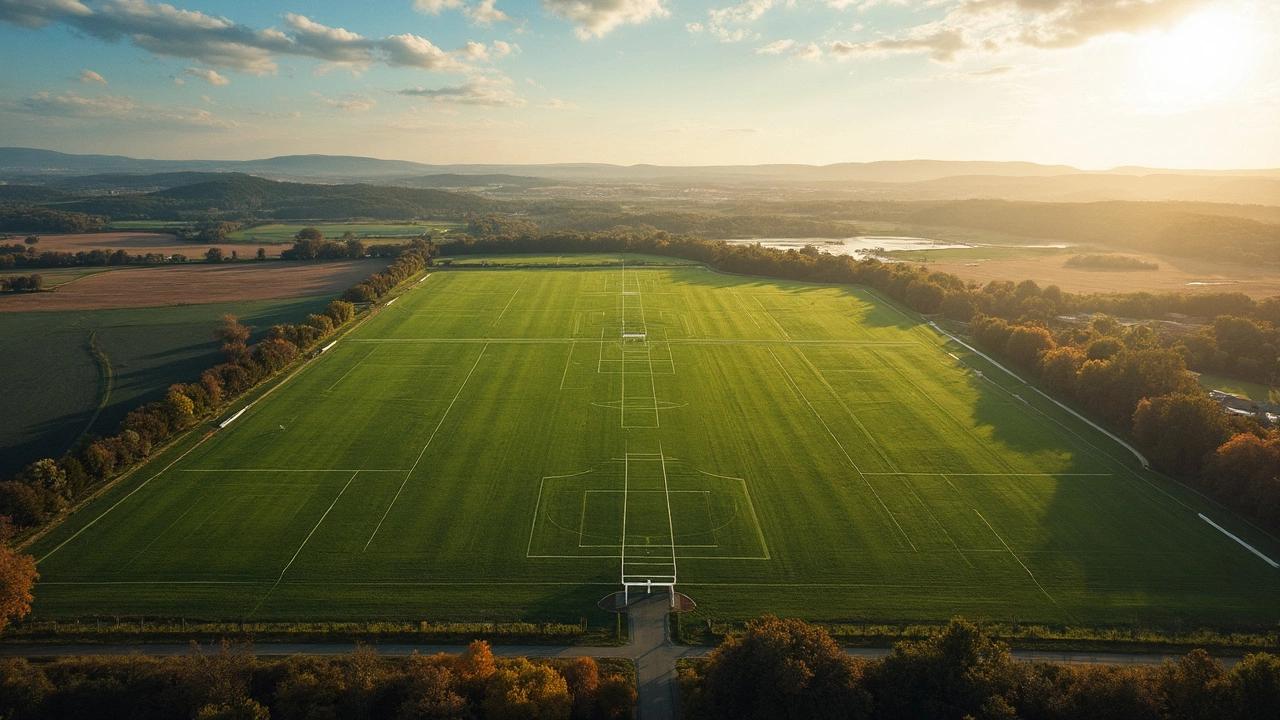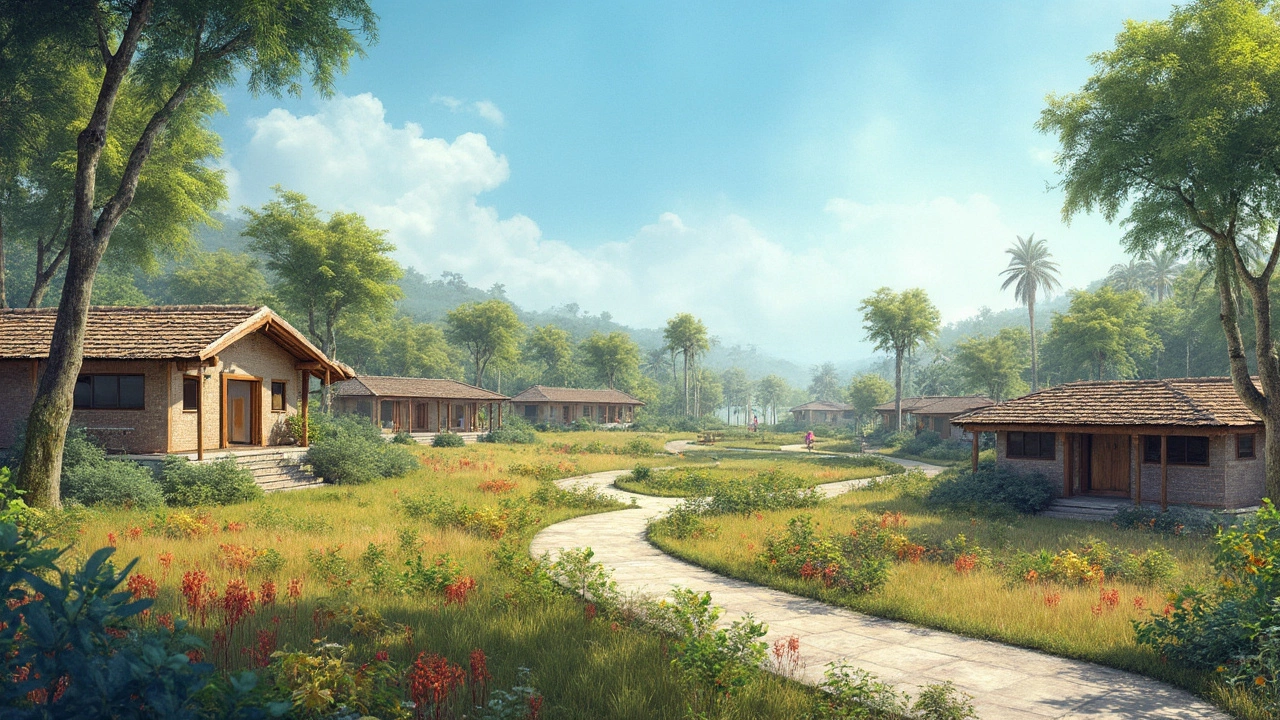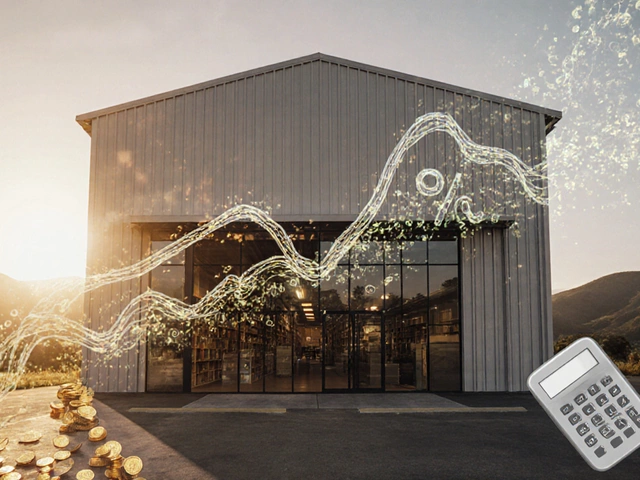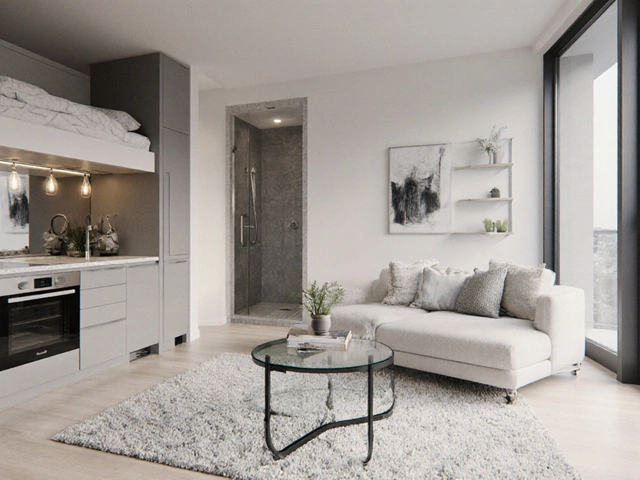How Wide is 10 Acres? A Practical Guide for Land Buyers

Here's a question that pops up a lot when diving into real estate: just how wide is 10 acres? If you're thinking of buying land, size matters a lot, right? You want to know what you’re actually getting. Let’s put it into perspective.
An acre is about 43,560 square feet. So, when we talk about 10 acres, we're looking at 435,600 square feet. Sounds huge? It kinda is, but it’s tough to wrap your head around numbers that big. Picture a football field. Now, imagine roughly 7.5 of them laid out in front of you. Yep, that's around 10 acres!
But don’t just get caught up in numbers or football fields. Think about what you could actually do with all that space. Whether you’re dreaming of a sprawling ranch, a garden paradise, or even a small community, 10 acres might just be the perfect fit. Understanding these dimensions not only helps with planning but also plays a role in zoning and potential land use regulations.
Figuring out exactly how wide 10 acres is can guide you on the journey to finding and maximizing your dream plot of land. It sets the stage for the life you want to build there.
- Understanding Acreage
- Visualizing 10 Acres
- Practical Uses of 10 Acres
- Optimizing Your Land
- Things to Consider When Buying Land
Understanding Acreage
So, what’s in an acre anyway? Why do we measure land this way when it doesn’t exactly scream relatable? Well, the acre has been around for ages, like since the Middle Ages. Originally, an acre was the amount of land a couple of oxen could plow in a day! Now, that's a history lesson nobody asked for, but it's neat to know how far back this measurement goes.
In today's terms, an acre is exactly 43,560 square feet. But who measures their backyard that way, right? To put it differently, visualize a square that's roughly 208.7 feet on each side. That’s your basic acre right there. Things start to make more sense when you realize your future pad might be 10 of these bad boys.
Now, when we talk about 10 acres, we're digging into a space that’s equivalent to about 7.5 football fields—goal lines and all. Whether you’re planning to live in or invest in that land, wrapping your mind around those dimensions is crucial.
Need a quick way to visualize it using something more practical? Here's a simple breakdown:
- A rectangular space measuring approximately 660 by 660 feet.
- If you draw out a perfect square, each side would be around 660 feet, stretching those measuring tapes from corner to corner.
Having a solid grasp on land size is going to help no matter what you're planning to do. Understanding these dimensions now will help when you're out there walking the land, sketching out projects, or working with zoning and development plans. And, seriously, who doesn’t want that kind of head start?
Visualizing 10 Acres
Trying to picture the size of 10 acres can be a bit tricky since it's more about space than straight measurements. To give you a clearer picture, let's break it down with some visual cues.
First off, if you're used to the size of a typical urban yard or a suburban garden, 10 acres might feel like a leap into the vast unknown. But let's simplify it: imagine a square. A perfectly square 10-acre plot would be about 660 feet on each side. That's a long stroll from one end to the other!
| Measurement | Equivalent Distance |
|---|---|
| 1 acre | 43,560 square feet |
| 10 acres | 435,600 square feet |
| 660 feet | each side of a square 10-acre plot |
How about football fields? That's an image sports fans can easily grasp. An American football field is about 1.32 acres, including the end zones. With 10 acres, you're looking at the space to fit about 7.5 football fields. It's a pretty impressive sight when you think about it!
- 10 acres equals roughly 7.5 football fields.
- A 10-acre plot is about 660 x 660 feet when squared off.
- This space offers massive potential for building, farming, and more.
Still hard to visualize? Picture this: once, I stumbled upon a story where someone related 10 acres to roughly 180 home lots. That means you’d need some serious time to explore every inch of your potential new property.
Picturing 10 acres helps you mentally prepare for what that kind of space offers. Whether it's about planning where to put a house, starting a vineyard, or just creating a personal retreat, understanding the space ensures you make the most of it.

Practical Uses of 10 Acres
So, you've got your eye on this piece of land, and you're thinking, what can I really do with 10 acres? Honestly, the possibilities are kind of awesome, especially when you start considering your options. Whether you're looking to invest or simply want a place to relax, 10 acres can cater to a wide array of dreams.
For starters, if farming gets you going, 10 acres can handle an impressive variety of crops or livestock. It's big enough to sustain a small farm where you can grow everything from veggies to grains or even raise some farm animals like chickens, goats, or a few cows. The space allows for rotation of crops, ensuring soil fertility over the years.
If you're more into recreation, why not turn your 10 acres into a personal playground? We're talking ATV tracks, hiking trails, or even a little fishing pond, assuming local regulations allow it. You can get that outdoor lifestyle without having to leave home.
Planning a homestead or a little getaway spot? You've got room to build not just a house, but maybe even a series of tiny homes or cabins if you're into hosting friends or turning it into a business. The trend of agri-tourism is on the rise, and having that space sets you up for renting out parts of your property on platforms like Airbnb.
- Real Estate Investment: With housing demand often exceeding supply, 10 acres could be developed into a small subdivision, pending zoning permissions.
- Nature Conservation: Love wildlife? Create a habitat for native species. Plant trees, set up birdhouses, or build a little nature trail.
- Community Projects: Transform your land into a community garden or outdoor event space. It’s a fulfilling way to engage with the local area and maybe even earn some extra income.
The surface area in question, distributed well, allows for combining several of these uses. So you could live your country life dream while capitalizing on the investment. Just always keep in mind local zoning laws and environmental regulations to ensure your plans are feasible.
Optimizing Your Land
Got your 10 acres? Nice! Now, how do you make the best use of it? With a bit of planning, you can turn your land into an absolute gem. The first step is to figure out what you really need from it. Do you want a peaceful hideaway, a farm, or a mix of both?
Start by mapping out your 10 acres. Use drone footage or satellite images to get a good view. This way, you can see the layout, spot high and low areas, and identify any trees or natural features like streams. Why is this important? Well, where you plant your garden or build a barn may depend on things like sun exposure and water access.
Consider dividing your land into sections. One part could be for your home and outdoor living space, another for gardening, and maybe another for livestock if that’s your thing. Creating paths or dirt roads helps ease access between these areas without tearing up the grass everywhere.
Are you environmentally minded? Think about using sustainable practices. Install rainwater collection systems, go for solar panels, or plant trees native to the area. Not only is this kinder to the earth, but it could also save you money in the long run.
If you're planning for agriculture, productivity is key. Rotational grazing and crop rotation keep the soil healthy and pests at bay. And if you’ve got extra space, why not rent it out? Some folks might be interested in leasing for events or farming, letting you earn a few bucks on the side.
Don't forget the legal side of things. Check zoning laws to make sure any plans for buildings or commercial use align with local regulations. A bit of legwork now can save you headaches later.
In a nutshell, optimizing your 10-acre plot is all about smart choices and looking ahead. With some creativity and elbow grease, you can turn it into something special that suits your lifestyle down to the ground.

Things to Consider When Buying Land
So, you're thinking about diving into the world of land ownership? That’s super exciting, but there are a few things you'll definitely want to think about before you make the leap. After all, spending your hard-earned cash on real estate is a big deal, and you want to be sure you’re making the right move.
First up, location is key. You’ve heard it before, but it really is everything. Are you looking for remote serenity, or do you want to be closer to the hustle and bustle of town life? Check if the land size fits the vibe of the area. Ten acres might feel different if it's near a bustling city versus a rural setting.
Next, think about the utilities and services. Does the land come with access to water, electricity, and sewage? Not all plots are set up with these, and adding them can get pricey. It’s worth asking about road access too. If your 10 acres is hard to get to, it might make living there a bit tricky.
Zoning and restrictions are crucial to understand. Are there specific things you can or can’t do with your land? If you’re dreaming of building a home or starting a farm, you’ll need to make sure the land’s zoning classification allows for it.
Don’t forget about the land's topography. Is it flat and ready for your plans, or are there slopes and ridges you’ll need to work around? This can impact construction costs, so it's a good idea to scout the land beforehand.
Here’s a little bonus tip: Get a land survey. It tells you the exact dimensions and borders of your plot, so there are no surprises about what you actually own.
Finally, have a look at some important financial considerations:
- Budget: Beyond the purchase price, think about taxes, maintenance, and any improvements you might need to make.
- Financing: Secure financing in advance if you’re not paying in cash. Lenders often have different requirements for land loans.
- Investment Value: Research if the land value is likely to appreciate or if it suits your lifestyle needs in the long run.
Buying land is a big step, but with careful thought and planning, it can be one of the most rewarding decisions you make! Keep these tips in your back pocket, and you'll be well on your way to owning your very own 10 acres.









Write a comment